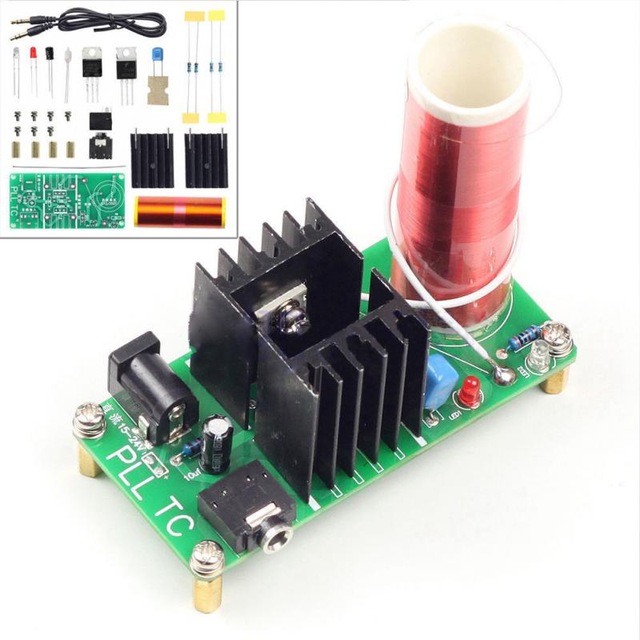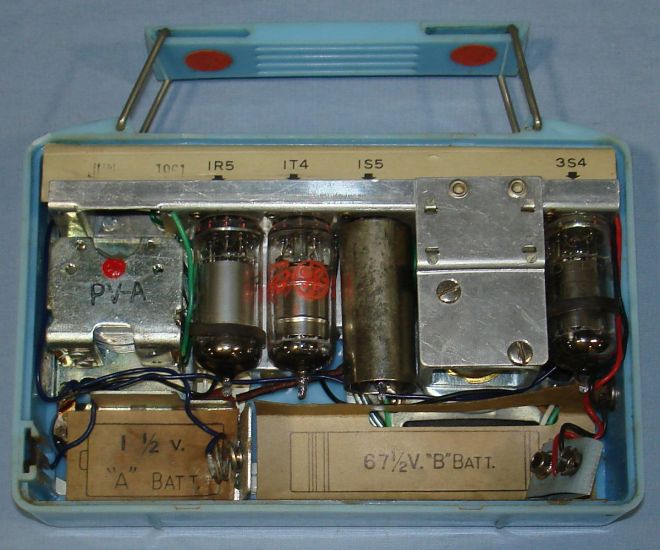As a technology minded person, I often wondered about those who design cordless devices. In particular, I am addressing phones. I assume some government agency somewhere spent millions of your tax dollars to come up with what someone thinks are safe levels of radiation.
Maybe these people know more than the rest of us, or maybe they don’t.
Case in point.
The standard cordless phone in 2017 most probably transmits to the base either at 900 MHz or 2.4 GHz. While your phone may advertise the higher frequency of 5.4 GHz that is most probably from the base to the phone.
Split frequency designs like this are prudent as it takes more power to transmit higher frequencies.
Now, these cell phones that we all carry around transmit either in the 850 MHz range or 1.8 ~1.9 GHz range.
MHz (Mega Hertz) stands for millions of cycles per second, GHz is (Giga Hertz) or billions of cycles per second. So every second depending upon the frequency, the RF (radio frequency) cycles millions or billions of time. IE 2.4 GHz is 2 billion, four hundred million, cycles per second.
Frequency should not be confused or conflated with power.
Power for our conversation today is watts. How much power or how many watts of RF (radio frequency) are we talking about?
Cell phones transmit up to 1.7 watts of power.
Cordless phones transmit as much and possibly more than a cell phone. The interesting aspect of this is there is this DECT (Digital Enhanced Cordless Telecommunications) technology that has been around for a little while now. They sell it as a plus but European studies have shown this might be more hazardous to your health than its predecessor.
The base of this technology is transmitting full power all the time whether your phone is in use or not. If the base is next to your bed or on your desk you are constantly bombarded with 5.4 GHz or at the least 2.4 GHz of radiated power in the form of RF.
Move it away from your body.
Why am I writing about this?
Ever since the first cell phones came out I wondered what they were doing and why. These phones are always talking to the cell towers announcing their availability and telling them where they are while checking in. The phone was and is smart enough to adjust its power level depending upon what is needed to communicate with the tower effectively. The reasons are many but the main idea is to “talk” with one cell tower at a time.
My phone, even today will often time be warm in my pocket, or just sitting on the desk.
While we really have no idea what a smartphone is doing all the time, you can bet if it is warm, it is transmitting something.

I built this little device with a few diodes. I will not belabor the technical aspects of this device other than to say it does not have any batteries. These devices are passive in that the only way that they are energized would be by outside energy fields or EM (electromagnetic) forces.
I got the idea from the crystal radio of my youth. Yes, I built one and housed it inside a pen casing. With a single diode and a coil and very little know how I had a radio that would pick up local radio stations and never needed a battery.
Since my original device that I designed and built years ago, I found this version on the internet for a few dollars.
Setting this thing on top of my phone it soon became obvious that the cell phone is transmitting constantly.
- Is it looking for data?
- Is the phone talking to the tower?
- Is the phone talking to my Wi-Fi network?
The answer is yes. We really have no idea if the phone is doing anything else in the (tin foil hat category).
Now with 1.7 watts of RF at 2GHz, give or take, right next to your ear hole, one has to wonder if that is healthy.
Out of curiosity, I moved my device around the phone to discover that the most of the radiation or highest amounts come out of the phone right by the earpiece. Why?
Knowing RF and the possible link to brain tumors, lymphoma and other nasty things why would the engineers put the transmitting antenna where it would be closest to your head?
This is the iPhone 6S.

My curiosity got the best of me so I checked my cordless phones.

The light powered strictly by RF from the phone is very bright, right on the ear hole and down by the mouthpiece, the light, or power output is nonexistent.

Imagine that your phone has enough RF power to illuminate an LED to full intensity and that energy is being pumped into your head right through your ear hole and of course next to your skull.
Tell me; why in the hell would you not put the antenna at the base of the phone where it would be furthest away from the body/brain? The energy required to light the led dissipates with distance. Logic would dictate that the less energy radiated close to your brain would be a good thing.
The pictures speak for themselves but now you know what you are looking at.
What can we do?
First off, we should ask the government for our money back that they paid for these studies. One would think that if they can come up with SAR (specific absorption rate) and what is safe that just maybe they might have said, “you know, you phone makers should place the transmitter/antenna away from their brains.”
It is kind of like that commercial where the bank is being robbed and the guard says, “Oh I am not a guard, just a monitor… you are being robbed.” What good is the FCC if they cannot think outside the box? The government, which they are part of, is to protect its citizens from faulty designs, much like the Corvair of the 60’s. Where is Ralph Nader these days?
It is amazing to me that they did scientific studies to figure out how much tissue would cook or be damaged by rf. Then they came up with the acronym SAR and finally did nothing more about it. “Look for a phone with a low SAR rating.” Are there labels, using this phone can cause brain cancer?”
What is so germane about 2.4 GHz and why am I sounding a little stressed about this?
That box in your kitchen that burns popcorn so nicely happens to work in that same frequency range.
Since there are millions of microwave ovens out there the FCC put broadband Wi-Fi, cordless phones, and many other unlicensed transmitters that the public uses in that same frequency range as the microwave oven. Part of your license on each piece of equipment reads something to the effect that this device must accept and deal with RFI or radiofrequency interference.
How does the microwave oven work and what does that have to do with my phone?
Microwave energy excites the molecules in stuff causing them to move faster. Much like rubbing your hands together you get friction which causes heat. That is how a microwave heats your lean cuisine dinner or left-overs from Sunday Brunch. Yes it uses more power but I ask you, would you stick your head in your microwave to see how long it takes to fry your brains? Consider the cell phone or cordless phone like a microwave crock pot, it might take longer but eventually, something is bound to be heated up.
Just for you people who think that I am a tin foil hat kind of person think of this one.
How many of our urchins you call grade schoolers now have the very latest iPhone sticking out of the back pocket. A trip to any mall will answer this question. Even if it is a hand me down generation 5, it puts out all sorts of power right next to that thinner more malleable skull and younger more tender, still forming brain tissue.
Then there is this whole blood brain barrier thing that doctors talk about. Does it really seem like a wise idea to put that kind of power that close to those newly formed brain cells? They are future tax payers you know. Wink wink…
Possibly one of them will say, “someone should really put the transmitter in the base of this thing away from my brain.” Will it take a child to figure this out? Maybe a riot on the Berkly campus to get the attention of corporate america who might tend to overlook such things.
I know, I am gettin my tin foil out…
With telecommunications being a multi-trillion dollar industry it is no wonder that this is overlooked. Much like the back scatter x-ray porn scanners at the airport which virtually strip search you, there is a greater good. Bombarding our bodies with ionizing radiation is not harmful as long as the government says that it is ok. (sarcasm)
Calling attention to it might cost Nokia or Apple or Panasonic a few dollars. What is the big deal about a few brain tumors, “can you hear me now?”
Since industry will probably not respond, how can you protect yourself?
Blue Tooth technology also uses RF in the same 2.4 GHz range but the power is very low. A class one transmitter uses about 1mw or Millie Watt. There is a newer headset that wraps around your neck with the earpiece extending from them. That would put the blue tooth transceiver around your neck away from your brain.
Try to always use a headset or speakerphone, and if they still have them, a corded phone.
Use e-mail or text and by all means try talking to people face to face. I know that is a radical concept but, I don’t think you are in danger of getting exposed to radiation that way.
About the device…
While the original crystal radio of my day used a 1N34 germanium diode this device uses nine 1SS86 diodes one tied to the other with an LED as one of the diodes. The legs are purposefully left long like that as they act as the antenna to capture any energy that might be present.
If you are creative you could make it look like a bug with a tail and a head that glowed. Just a thought.
I am not claiming to be an expert on any of this. Just a person who thinks common sense is in limited supply. These days we too readily accept that which is, without asking why. Ask Why!
Cheers!
Scott

































































You must be logged in to post a comment.